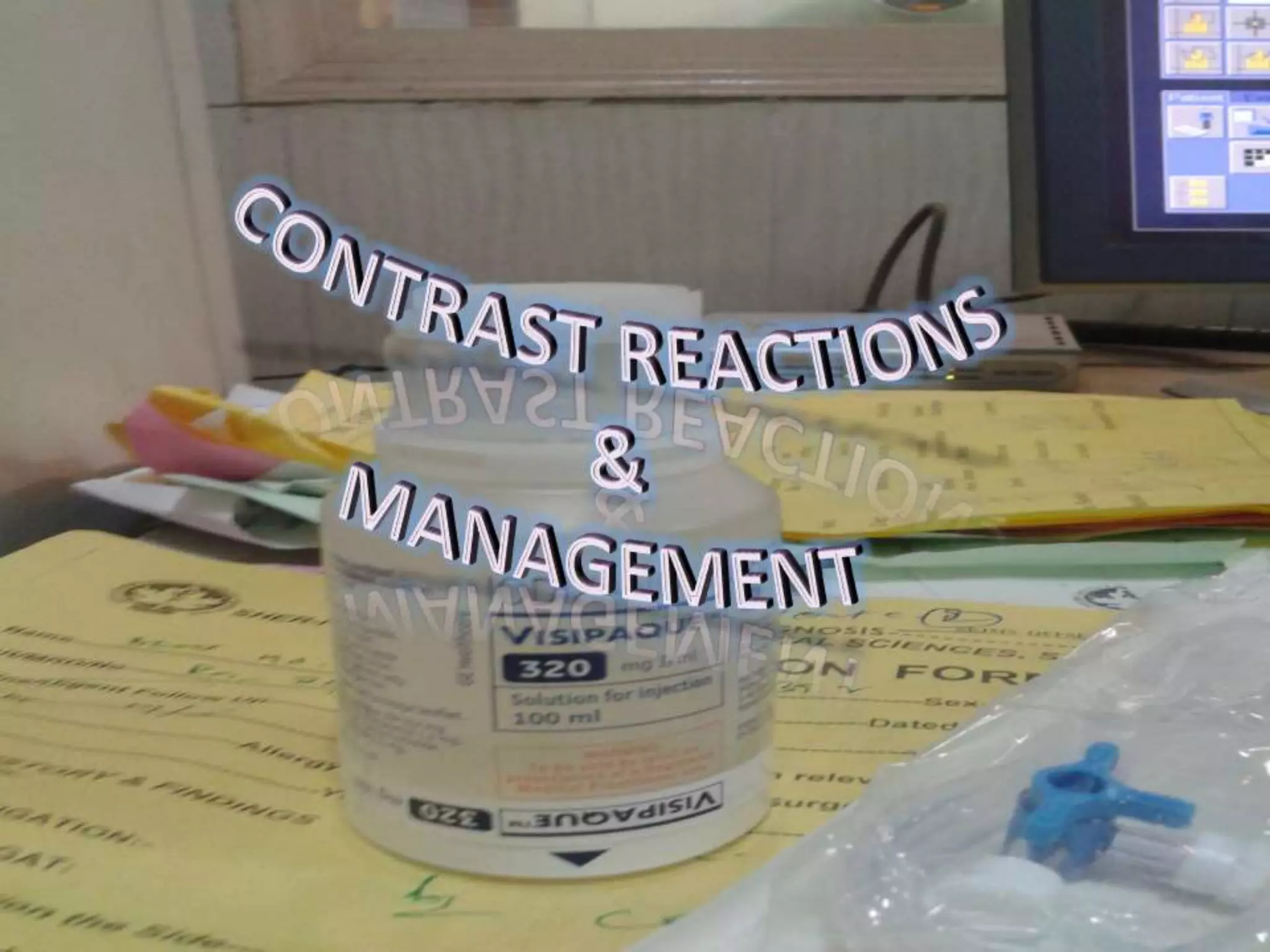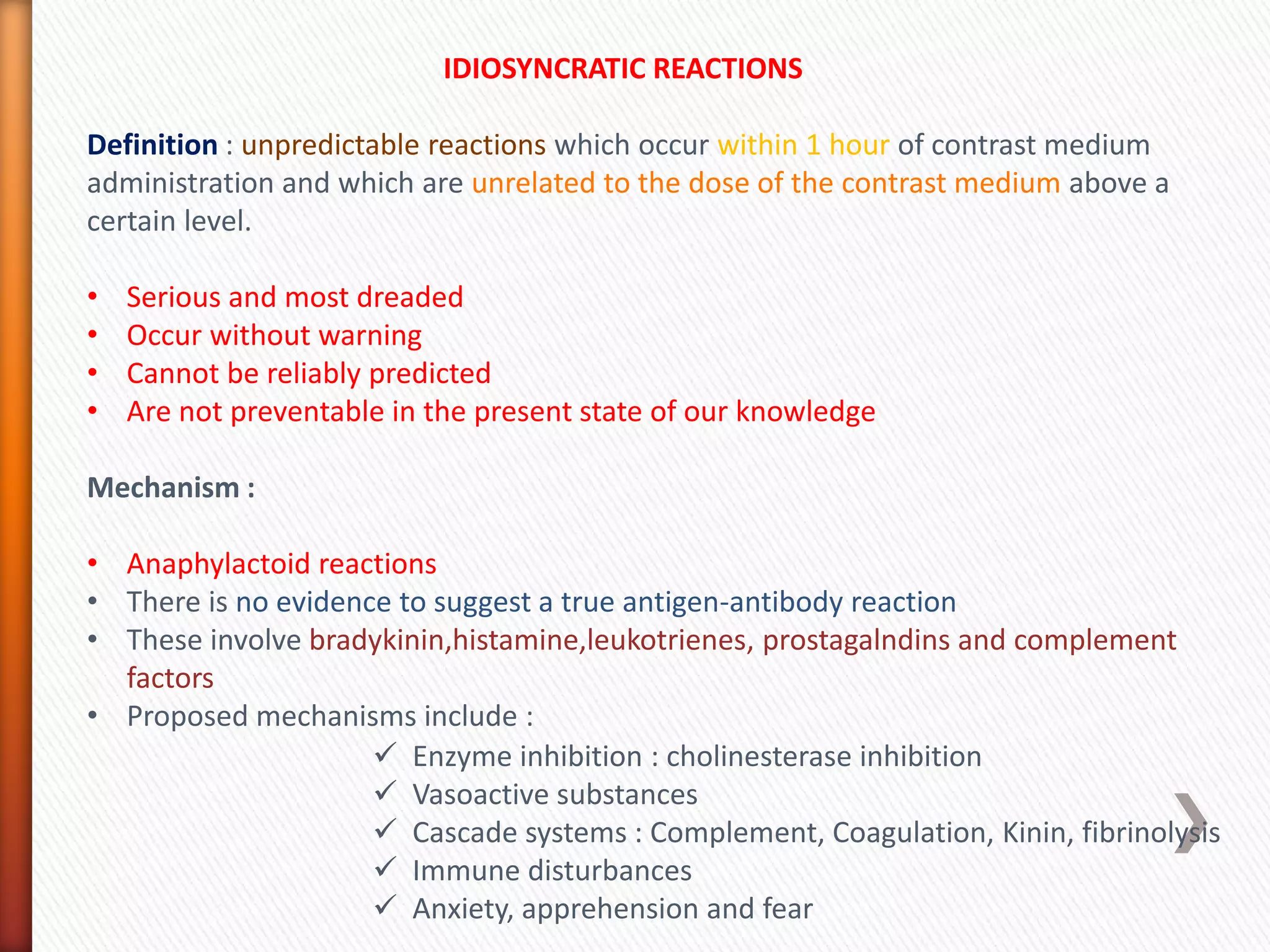This document discusses contrast-induced nephropathy (CIN), an important cause of hospital-acquired acute kidney injury. It defines CIN and outlines its risk factors such as pre-existing kidney disease, diabetes, procedures using high volumes of contrast, and certain medications. The mechanisms of CIN and its natural history are described. Prevention strategies like adequate hydration and use of low-osmolar contrast agents are recommended. The role of N-acetylcysteine in prevention is controversial based on conflicting trial results. The overall incidence of CIN in one study was reported as 12.6%.


































































